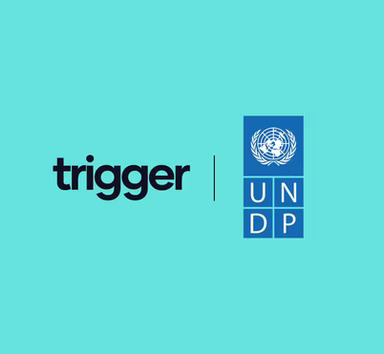Unlock the Future of the Web with Web 3.0!

“Unlock the Future of the Web with Web 3.0!”
Introduction
Web 3.0 is the next generation of the internet, which is expected to be more intelligent, interactive, and secure than ever before. It is a term used to describe the evolution of the internet from a static, text-based platform to a more dynamic, interactive, and intelligent platform. Web 3.0 will be powered by technologies such as artificial intelligence, blockchain, and the Internet of Things (IoT). It will enable users to interact with the web in a more natural and intuitive way, allowing them to access information more quickly and easily. Web 3.0 will also provide more secure and private online experiences, as well as more personalized content.
Exploring the Future of Web 3.0: What Are the Possibilities and How Can We Prepare?
The future of the internet is here, and it’s called Web 3.0. This new version of the web promises to revolutionize the way we interact with the internet, and the possibilities are endless. But what exactly is Web 3.0, and how can we prepare for it?
Web 3.0 is the next generation of the internet, and it is based on the concept of decentralization. This means that instead of relying on a single server or company to store and manage data, Web 3.0 will use a distributed network of computers to store and manage data. This will make the internet more secure, reliable, and efficient.
One of the most exciting possibilities of Web 3.0 is the potential for new applications and services. For example, Web 3.0 could enable the development of decentralized applications (dApps) that are not controlled by any single entity. These dApps could be used to create new services, such as peer-to-peer marketplaces, decentralized social networks, and more.
Another potential benefit of Web 3.0 is the ability to create new forms of digital currency. Cryptocurrencies, such as Bitcoin, are already being used to facilitate transactions on the internet, but Web 3.0 could enable the development of new digital currencies that are more secure and reliable.
Finally, Web 3.0 could also enable the development of new ways to store and manage data. For example, blockchain technology could be used to create secure, distributed databases that are not controlled by any single entity. This could revolutionize the way we store and manage data, making it more secure and reliable.
So how can we prepare for Web 3.0? The first step is to stay informed about the latest developments in the field. There are many resources available online that can help you stay up to date on the latest news and developments in the world of Web 3.0.
It is also important to understand the implications of Web 3.0 for your business. If you are a business owner, you should consider how Web 3.0 could affect your operations and how you can take advantage of the new opportunities it presents.
Finally, it is important to invest in the right technology. Investing in the right hardware and software can help ensure that your business is ready for the future of the internet.
The future of the internet is here, and Web 3.0 promises to revolutionize the way we interact with the internet. By staying informed, understanding the implications of Web 3.0, and investing in the right technology, we can prepare for the future and take advantage of the new opportunities it presents.
Exploring the Impact of Web 3.0 on Businesses: What Are the Opportunities and Challenges?
The emergence of Web 3.0 has been a game-changer for businesses, offering a range of opportunities and challenges. Web 3.0 is the latest iteration of the internet, characterized by the use of semantic web technologies, artificial intelligence, and the Internet of Things (IoT).
The opportunities presented by Web 3.0 are vast. Businesses can leverage the power of the semantic web to better understand customer needs and preferences, allowing them to tailor their services and products to meet those needs. Additionally, the use of artificial intelligence can help businesses automate mundane tasks, freeing up resources to focus on more important tasks. Finally, the IoT can help businesses collect and analyze data from connected devices, allowing them to gain valuable insights into customer behavior and preferences.
However, Web 3.0 also presents a number of challenges. Security is a major concern, as the use of connected devices and the collection of data can leave businesses vulnerable to cyberattacks. Additionally, businesses must ensure that they are compliant with data privacy regulations, such as the General Data Protection Regulation (GDPR). Finally, businesses must ensure that they have the necessary infrastructure and resources to take advantage of the opportunities presented by Web 3.0.
Overall, Web 3.0 presents a range of opportunities and challenges for businesses. By leveraging the power of the semantic web, artificial intelligence, and the IoT, businesses can gain valuable insights into customer behavior and preferences, automate mundane tasks, and gain a competitive edge. However, businesses must also ensure that they have the necessary infrastructure and resources to take advantage of these opportunities, as well as the necessary security measures to protect their data.
Examining the Security Implications of Web 3.0: What Are the Risks and How Can We Mitigate Them?
As the world moves into the era of Web 3.0, the security implications of this new technology must be examined. Web 3.0 is a term used to describe the next generation of the internet, which is characterized by increased decentralization, automation, and data sharing. While these features offer many advantages, they also present a range of security risks that must be addressed.
One of the primary security risks associated with Web 3.0 is the potential for data breaches. With the increased decentralization of data, it is easier for malicious actors to access sensitive information. Additionally, the automation of processes can lead to vulnerabilities that can be exploited by hackers.
Another security risk is the potential for malicious actors to manipulate data. With the increased automation of processes, malicious actors can use automated tools to manipulate data in order to gain access to sensitive information or to disrupt services.
Finally, the increased data sharing of Web 3.0 can lead to privacy concerns. With the increased sharing of data, it is easier for malicious actors to track user activity and gain access to personal information.
Fortunately, there are a number of measures that can be taken to mitigate these security risks. First, organizations should ensure that their systems are secure and up-to-date. This includes implementing strong authentication measures, encrypting data, and regularly patching systems.
Second, organizations should ensure that their data is properly secured. This includes implementing access control measures, such as user authentication and authorization, as well as data encryption.
Finally, organizations should ensure that their data is properly monitored. This includes implementing logging and monitoring systems to detect suspicious activity and alert administrators to potential threats.
By taking these measures, organizations can ensure that their systems are secure and that their data is properly protected. As Web 3.0 continues to evolve, it is important that organizations remain vigilant and take the necessary steps to protect their systems and data.
Understanding the Benefits of Web 3.0: How It Could Revolutionize the Way We Interact Online
The internet has revolutionized the way we interact with each other, and the introduction of Web 3.0 could take this to the next level. Web 3.0 is the next generation of the internet, and it promises to bring a host of new features and capabilities that could revolutionize the way we interact online.
Web 3.0 is based on the concept of the “semantic web”, which is a web of data that can be understood by machines. This means that computers can understand the meaning of the data, rather than just the words. This could lead to a more intelligent web, where computers can understand the context of the data and provide more relevant results.
One of the most exciting aspects of Web 3.0 is the potential for increased personalization. With the semantic web, computers can understand the context of the data and provide more relevant results. This could lead to a more personalized web experience, where users can get more tailored results based on their interests and preferences.
Another benefit of Web 3.0 is the potential for increased security. With the semantic web, computers can understand the context of the data and provide more secure results. This could lead to a more secure web experience, where users can be sure that their data is safe and secure.
Finally, Web 3.0 could lead to a more efficient web experience. With the semantic web, computers can understand the context of the data and provide more efficient results. This could lead to a more efficient web experience, where users can get the information they need faster and more accurately.
Overall, Web 3.0 could revolutionize the way we interact online. With its potential for increased personalization, security, and efficiency, Web 3.0 could lead to a more intelligent, secure, and efficient web experience. It could be the next step in the evolution of the internet, and it could revolutionize the way we interact online.
Exploring the Potential of Web 3.0: What It Is and How It Could Change the Internet
The internet has come a long way since its inception in the late 1960s. From the early days of dial-up connections to the lightning-fast speeds of today, the internet has revolutionized the way we communicate, work, and play. Now, a new era of the internet is on the horizon: Web 3.0.
Web 3.0 is a term used to describe the next generation of the internet, which is expected to be more intelligent, interactive, and secure than ever before. It is being developed to provide users with a more personalized experience, allowing them to access information more quickly and easily.
At the heart of Web 3.0 is the concept of the “semantic web”. This is a web of data that is connected and organized in a way that makes it easier for computers to understand and interpret. This will allow computers to better understand the context of a user’s search query and provide more accurate results.
In addition, Web 3.0 will be more secure than ever before. It will use advanced encryption techniques to protect user data and prevent malicious actors from accessing it. This will make it much harder for hackers to steal personal information or disrupt services.
Finally, Web 3.0 will be more interactive than ever before. It will allow users to interact with websites in a more natural way, using voice commands or gestures. This will make it easier for users to find what they’re looking for and make the web more accessible to those with disabilities.
Web 3.0 has the potential to revolutionize the way we use the internet. It could make the web more secure, more personalized, and more interactive. It could also open up new possibilities for businesses, allowing them to better target their customers and provide more tailored services.
The future of the internet is here, and Web 3.0 is set to be the next big step in its evolution. It promises to be faster, smarter, and more secure than ever before, and it could change the way we use the internet forever.







Responses